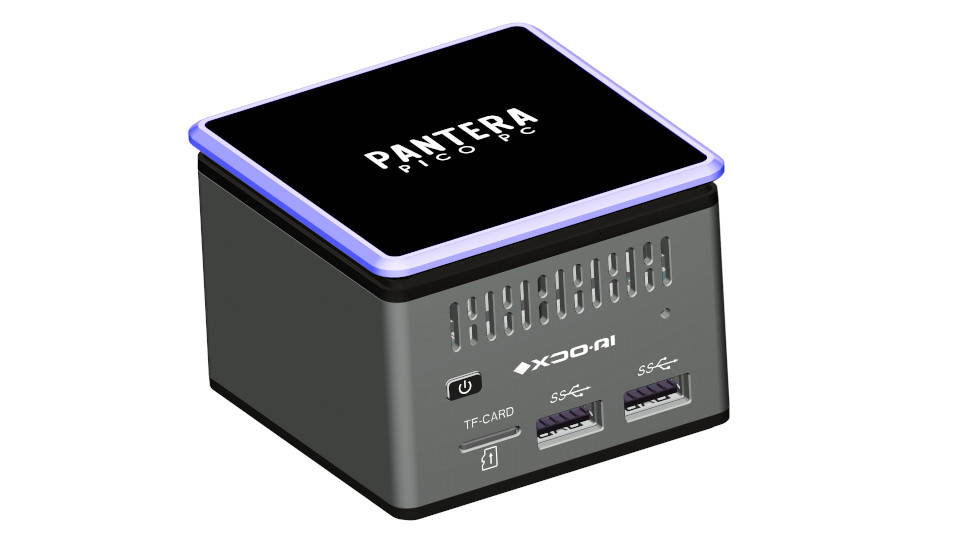This tiny Linux PC has a unique feature that sets it apart from the rest of the market
A docking station for a PC? We’re perplexed

The Pantera Pico PC, by XDO.AI, is the fourth thin client/mini PC we’ve seen with this tiny cubic form factor.
However, unlike the GMK NucBox and the Chuwi Larkbox that we reviewed (and Xiaomi’s almost identical computer), this one has three unique selling points that make it stand out from the competition (for better or for worse).
First, it is the only model to date that is certified to run on Ubuntu, the popular Linux distribution. Then there’s the fact it's available in a number of color schemes with matching LED lights. And, finally, it is the only PC we know of that includes an (optional) docking station.
- We've built a list of the best docking stations out there
- Here's our choice of the best business computers available
- Check out our list of the best workstations on the market
The rest of the specification sheet is familiar: an Intel Celeron J4125 processor, up to 8GB LPDDR4 memory, WI-FI 5, up to 512GB eMMC 5.1 storage, four full-size USB ports, one Type-C power connector, an HDMI 2.0 port, a 3.5mm audio jack and a microSD card reader.
An aluminum chassis and an improved cooling system mean the Pantera should also be cooler to run under load compared to its rivals.
Like so many others, the device will start life on a crowdfunding platform (Indiegogo) and early bird backers will get up to 40% discount. The stretch goal for the project will be an entertainment platform (the docking station) called Xentaur.
A Windows 10 version is also in the pipeline and there will be a spare M.2 slot for additional onboard storage.
Are you a pro? Subscribe to our newsletter
Sign up to the TechRadar Pro newsletter to get all the top news, opinion, features and guidance your business needs to succeed!
- Here's our list of the best PCs for video editing right now

Désiré has been musing and writing about technology during a career spanning four decades. He dabbled in website builders and web hosting when DHTML and frames were in vogue and started narrating about the impact of technology on society just before the start of the Y2K hysteria at the turn of the last millennium.